A power steering system is used to assist the driver by reducing the effort it takes to turn the steering wheel. On EV's this is done electronically by the use of an electric motor, but on a gasoline engine this task is taken up by a hydraulic pressure system driven by the engine via the power steering pump.
What Goes Wrong?
Hydraulic fluid has a duty cycle which must be adhered to, if left unattended the fluid breaks down causing diminished operation while producing a groaning noise when the steering is at idle, or being used (turning the wheel). This condition can be corrected by a power steering fluid flush, if the pump has been run for an extended period with degraded fluid it can damage the steering pump as well.
Tools and Supplies Needed
- Hose Clamp Pliers
- Funnel
- Power steering fluid
- Fluid catch basin
Lets' Jump In!
Start with the engine off, and the vehicle on level ground. Use protective gloves,
clothing and eye-wear to guard against accidental spillage. Locate the power steering
reservoir and remove the cap and add a funnel.
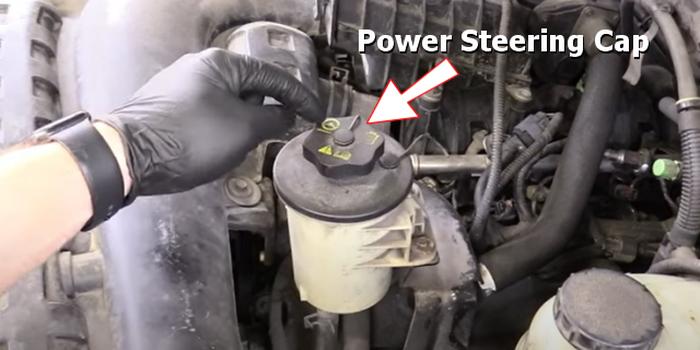
There will be two hoses, one coming and the other going from the steering pump
to the steering box or rack
and pinion. Locate the low side or return hose by discovering which hose is held
on by hose clamps. The
high pressure hose is always bolted together with fittings so you can't mix
them up. In this case there is a fluid cooler attached to the low pressure side,
most low pressure hoses go to the rear of the pump or fluid reservoir.
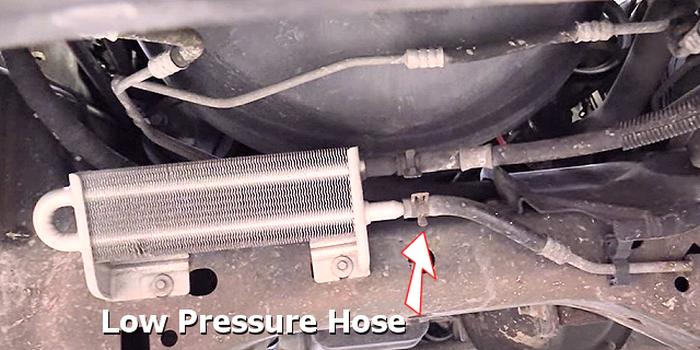
Using a hose clamp removal tool or pliers remove the hose from the fitting, fluid
will start to leak out draining the power steering fluid reservoir, this is normal.
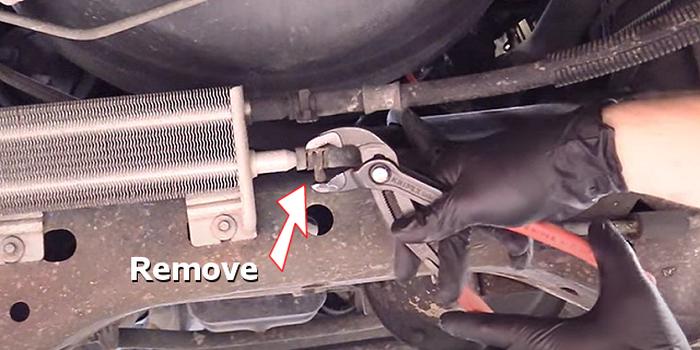
You will need to plug the low side line leading to the reservoir, this is so
when you refill the reservoir to perform the flush it doesn't leak out without going
through the pump. Here we used a vacuum cap but you can use anything that will stop
the fluid flow.

Connect a piece of 3/8 fuel line to the low pressure side return line, while
the other end is sitting inside a fluid catch basin or bucket. Here we use the power
steering fluid cooler but you can use the return line from the rack or steering
box.
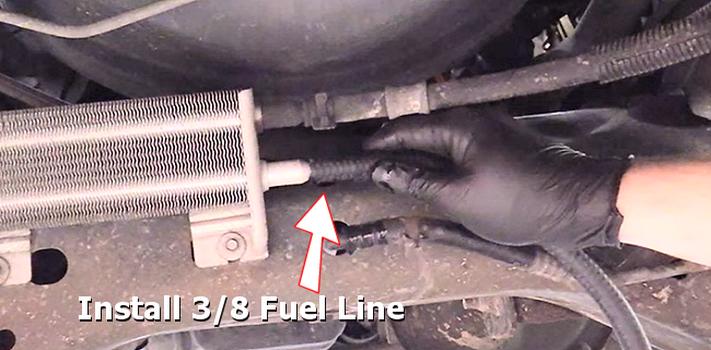
Install a funnel into the fluid reservoir, this will help pour the fluid into
the system without spillage once the flush begins.
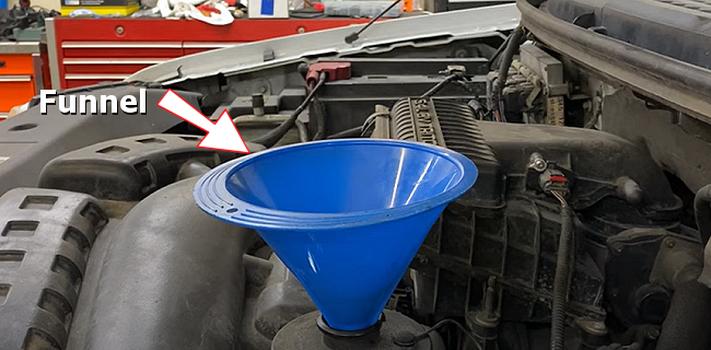
Watch the Video!
Please watch this video of the job being done, then continue down the guide to glean additional helpful information.
Fill the reservoir almost to the top with power steering fluid, in this case
we can use transmission fluid which is basically the same thing.
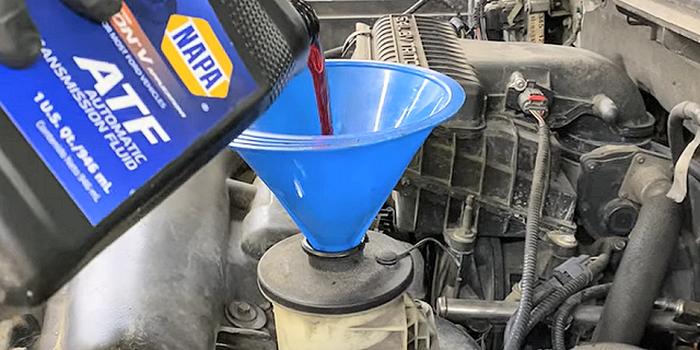
It is best to have the front of the vehicle lifted (jacked
up) so there is no weight on the front tires. Have a helper start the engine
and turn the steering wheel in both directions (one time) while you are adding fluid
into the power steering fluid reservoir, do so until the fluid coming out of the
hose is clean and clear then shut the engine off.
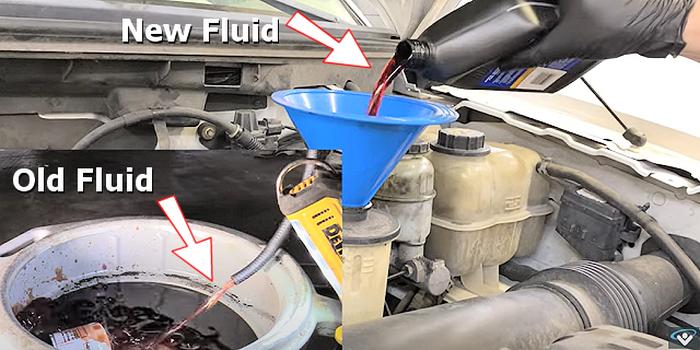
Reconnect the low side hose and position the hose clamp squarely to avoid leakage.
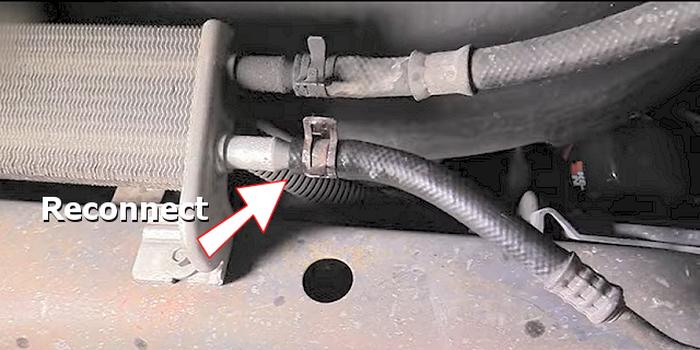
Refill the fluid reservoir with new power steering fluid and reinstall the cap,
start the engine and while the front wheels are still off the ground turn the steering
wheel side to side a couple of times, shut the engine off. Recheck the fluid level
and add if needed. The system may make a little noise as the remainder of the air
is dissipated which can take a day or two, also recheck the fluid level and check
for leaks and you are all set.
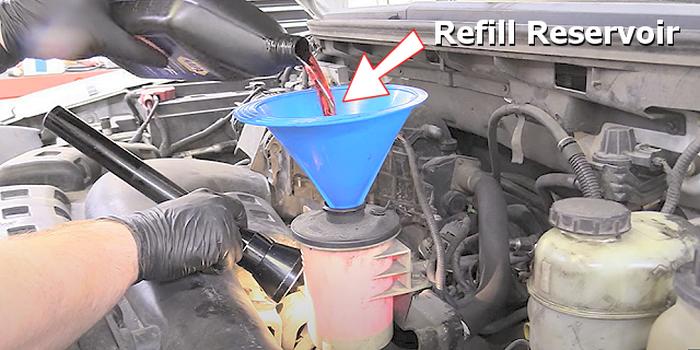
Questions?
Our certified technicians are ready to answer car repair questions for free. We hope you saved money and learned from this guide. We are creating a full set of car repair guides. Please subscribe to our 2CarPros YouTube channel and check back often for new videos which are uploaded regularly.